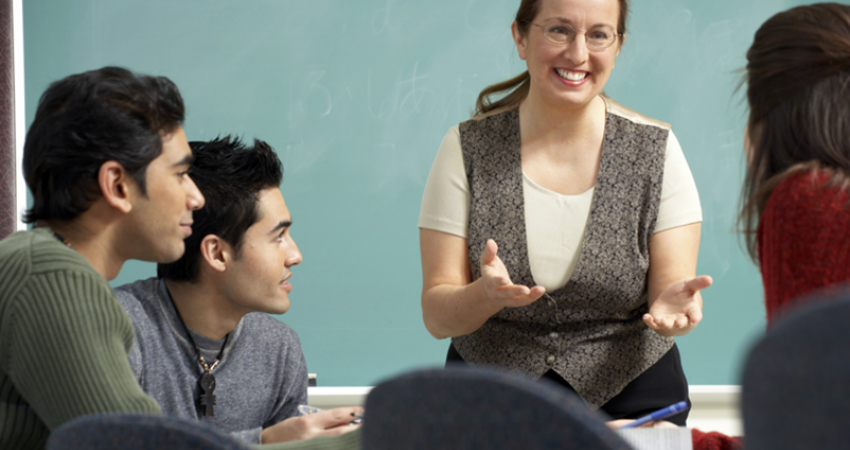
By Nicole Bulalacao - July 2015
PAPER CITATION
Jurow, A. S., Hall, R., & Ma, J. Y. (2008). Expanding the disciplinary expertise of a middle school mathematics classroom: Re-contextualizing student models in conversations with visiting specialists. Journal of the Learning Sciences,17(3), 338–380. doi:10.1080/10508400802192714
There is often a disconnect between the mathematics practices of students and those of STEM professionals. Students generally try to find a definite answer to a question posed by an instructor. STEM professionals, by contrast, often employ thought experiments, playing with ideas to develop multiple solutions for real-world problems. For example, a student may understand slope on a graph as a proportion of x-values and y-values to get the correct answer on a test, while a biologist, seeing a negative slope on a graph, may apply a thought experiment to draw conclusions about population trends in multiple hypothetical scenarios.
Researchers Jurow, Hall, and Ma examined how conversations and interactions between students and STEM professionals expanded middle-schoolers’ understanding of math modeling. Combining the practices of students and professionals provided what the researchers call “hybrid-interactional practices.” These practices enabled youth to think through disciplinary content in a way that is more reflective of STEM professionals’ disciplinary-based discourse strategies.
Research Design
The investigators studied school projects in which students role-played as biologists consulting on predator-prey effects of fish at a Venezuelan rice farm. Student groups worked with modeling software to simulate environmental conditions that could affect their population model. Presentations included “design reviews” in which students were questioned by visiting professional scientists about their models.
In design reviews, scientists asked questions that built on students’ models: What would happen to the fish population over a longer time frame? What would rice production look like in 20 years if all the guppies died? This method of questioning, termed “re-contextualizing,” led students to re-assess their models in terms of how they would apply them in new contexts. Re-contextualizing allowed the professionals to draw on their expertise to ask open-ended questions related to real-world problems.
Research Findings
Re-contextualization provided a way for students to adopt mathematical practices similar to those of STEM professionals. For example, during a design review, a visiting biologist focused on a time segment in a student group’s model that depicted increasing and decreasing population trends. Each student was asked to consider this trend and predict the population over a longer time frame. Students re-ran the experiment on the computer to compare their hypotheses with the software model’s results. This interaction allowed students to see and use practices of biologists such as identifying trends, using trends to make hypotheses, testing predictions, and comparing hypotheses to results.
This mode of inquiry also provided alternative roles for students. For example, one group appeared to resist participation in the project. This group submitted a poster that included minimal data and presented a model in which the entire guppy population died. Despite this initial resistance, the expert successfully engaged group members by asking how results would differ over a longer time period if a “lazy biologist” used a model based on limited data such as a small sample size and a short sampling period. This question framed the students’ work in ethical terms, rather than in terms of classroom participation. The students responded by using math concepts to explain what a proper biologist would notice in the graph and how this would be different from the conclusions of the “lazy biologist.” Reframing the question engaged the students in math modeling because it led them to think about biologists’ responsibilities from a work-ethic perspective. It provided a new context in which the students could express a deeper understanding of math content than what they presented on their poster.
Theoretical Basis
Jurow and colleagues draw on Lave and Wenger’s (1990) sociocultural practice theory of identity and learning, which focuses on how identity is distributed across people, activities (including talk), and physical representation. The theory also emphasizes that identity is formed through social, cultural, and historical activity.
This work also builds on Guitiérrez, Baquedano-López, and Tejada’s (1999) concept of ‘third space” that combines in-school curriculum with students’ own intellectual, linguistic, and cultural resources. Combining school subjects with students’ prior knowledge creates a hybrid space where academic content may be practiced and discussed in ways that are relevant in students’ lives. In third spaces, students can take on roles and practices that may be unavailable in classrooms or at home.
In this study, students took on the role of scientists and drew from both in-school and out-of-school experience to make meaning from their mathematical models. Re-contextualizing positioned students as critical thinking partners and gave students ownership of knowledge that they co-created with the adult expert, in contrast to the traditional student-teacher power dynamic, where the authority of knowledge rests with teacher.
Implications for Practice
Re-contextualizing can create opportunities for youth to expand and deepen their understanding of disciplinary subjects in ways that may be unavailable in the traditional student-teacher relationship. This mode of inquiry often requires few additional resources from either the learning facilitator or the scientific expert, yet it offers multiple ways for students to engage with academic content. Re-contextualizing creates opportunities for youth to think about authentic questions, engage in scientific practices, and use tools in ways that reflect the practices of STEM professionals.
References
Gutiérrez, K. D. , Baquedano‐López, P., & Tejada, C. (1999). Rethinking diversity: Hybridity and hybrid language practices in the third space. Mind, Culture, and Activity,6(4), 286–303. doi:10.1080/10749039909524733
Lave, J., & Wenger, E. (1991). Situated learning: Legitimate peripheral participation. Cambridge, UK: Cambridge University Press.




